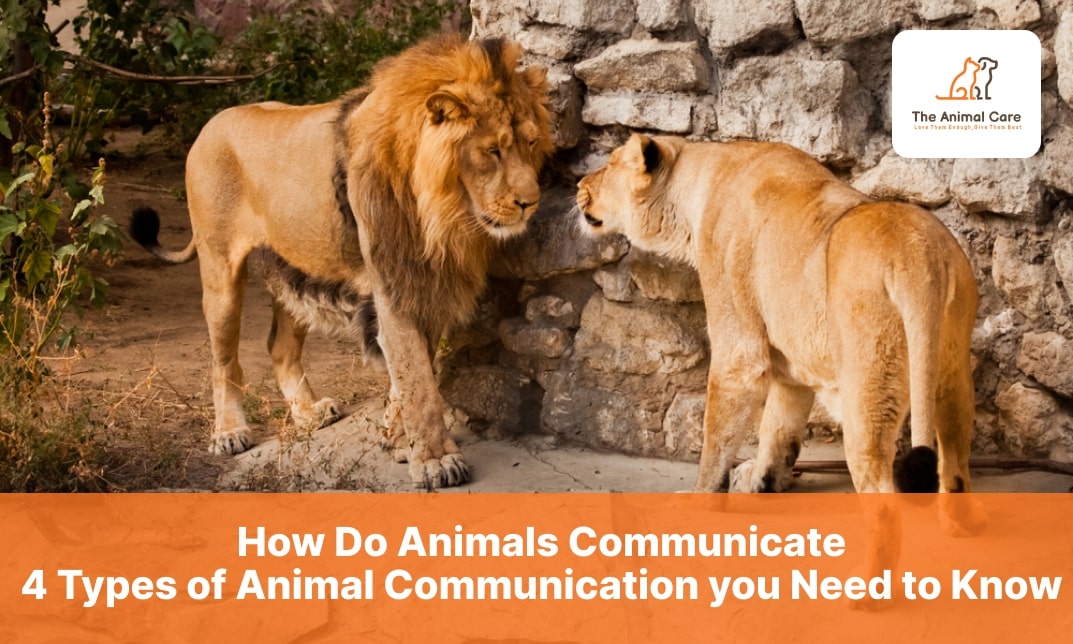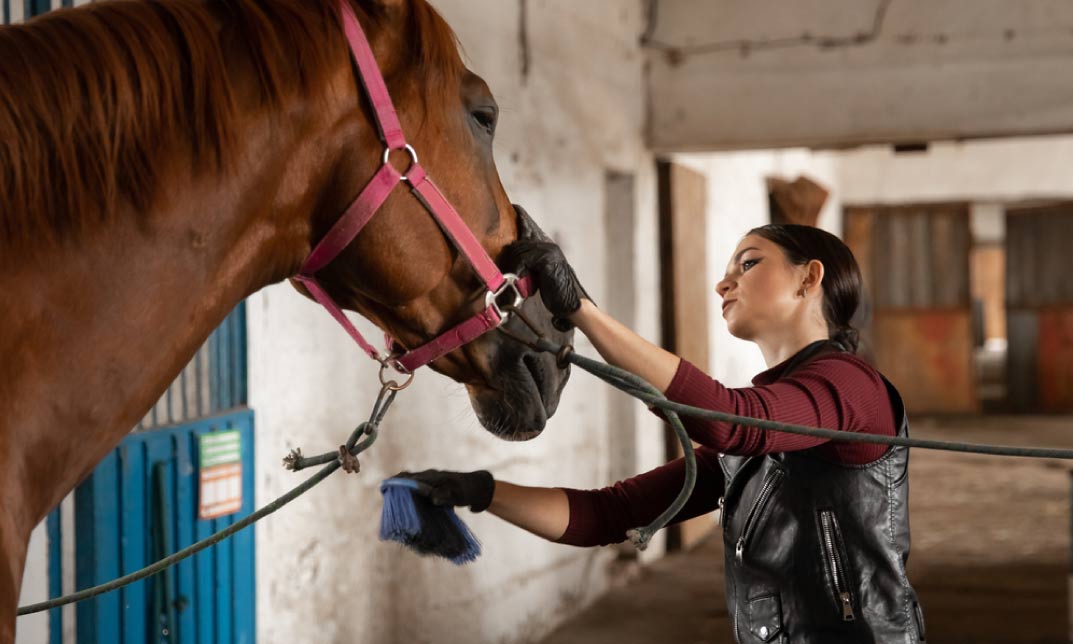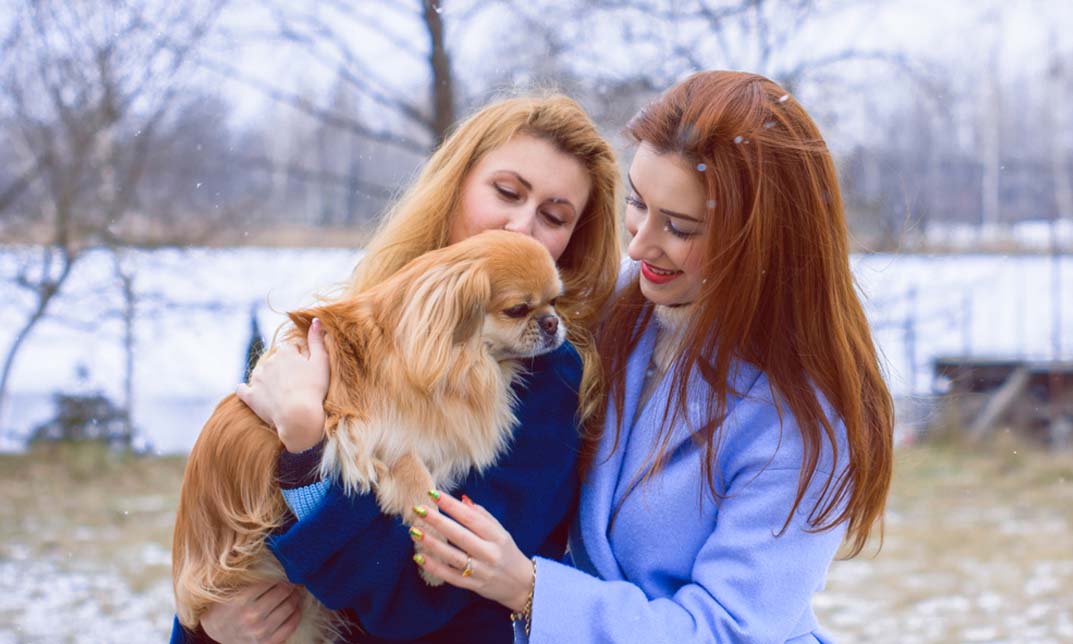
Animals are fascinating creatures. They could be our loyal companions if we provide them with care and attention. The first key to maintaining a healthy relationship with the animals is understanding them and communicating with them effectively. Now you might ask how we are going to communicate with something that does not speak? Well, you can do that in their way. Firstly, you need to understand their behaviour. Only after that you can communicate with them in their own language.
How Do Animals Communicate?
Animal communication is pretty much the same as human communication. The same old process of passing information to one another or the whole group results in a response or some change. As humans, there is sender, receiver and feedback involved. The only difference you can find is that you speak with proper words while they speak through using different methods of communication. There are 4 common types of animal communication that animals use to express themselves, which are:
1. Auditory communication involving sound
2. Visual communication involving gesture, posture, etc.
3. Tactile communication involving touch
4. Chemical communication involving pheromone
Usually, animal communication occurs between the same members of a species, but it can also take place between different species. Of course, humans and pets are common examples of that. Some animals are very social and expressive, while some could be extremely lone, communicating only among their own members of species. Some animal species rely on one method of the methods mentioned above to communicate with each other, while some species use more than just one. Interesting facts about animals are that they use communication to express their affection, warn off of threats, or attract a mate.
Auditory Communication
Have you ever wondered how animals communicate with sound? When we talk about animal communication, the first thing that probably comes to your mind, which you are sure of, must be noises and sound. Growing up, even if you don’t know anything about animals, you must have woken up to the chirping of the birds. That’s called auditory communication.
Why do birds chirp you awake? Do they have enmity with you? No! The birds are communicating among themselves and having the time of their life. Another example of auditory communication is the ‘meow’ of the passing cat or the woof of the neighbour’s dog. They are expressing themselves either their satisfaction or dissatisfaction. Only they know the best.
Animals use sounds to express their feelings. When a pet owner provides some food to his dog and the dog barks, that means the dog is happy. Similarly, when a lion growls at a hunter, that means the lion is warning the hunter. Some animals use sounds to alarm their buddies about the approaching danger, while some use them to impress their mates. When a bird sings, usually it’s for his mate or to teach his baby birds. Merian animal Humpback Whale also communicates through sound. Its songs can be heard in some parts of the ocean for miles.
Some animals don’t have vocal organs but rather have complex auditory communication methods. Insects like cicadas, mosquitos, tenrecs etcs. Relays on their body parts to create auditory communication methods.
Do all animals use sound to communicate?
Not all animals communicate with sound, even though auditory communication might seem to be one of the most basic forms of communication. You can take the species of marine animals and a few species of insects as an example.
Visual communication
Visual communication in animals is based on visible signals. These visible signals could include gestures, postures, facial expressions, colouration, camouflaging, etc. Few of these visual communication forms might not seem obvious at first glance, but with close inspection, you will be able to understand them.
Gestures and postures are the most commonly used visual communication for animals. You can see animals doing body movements such as raising hands, flicking feathers, shrinking, slapping the ground, slow body language, eye contact, etc., to attract their fellow mates’ attention, to ward off danger, for playtime or hunting. As for facial signals, the most common example you will find is of a young chimpanzee. They grin at an approaching dominant male of their species to show their acceptance of the male’s dominance. The grin is known as the fear grin.
Another visual signal seen in animal communication is the change in colouration. The change can occur in a single part of their body that had no colour beforehand, like the female monkeys in heat or the existing shade of the body part like a poison dart frog. The reason behind such changes is mostly due to warding off approaching danger or going into heat.
Camouflaging is also a form of visual communication. Camouflaging includes an animal changing its appearance to resemble something else to deceive the onlookers and hide from predators or prey. It communicates through camouflaging that there is nothing to see at all. There are a few insects that can turn their look into leaves, frogs into moss, a species of snakes, and even marine birds too.
What animals communicate visually?
The answer, in general, would be every species that hunts or goes through heat. Common animals who usually communicate through the visual method are dogs, cats, chimpanzees, species of female monkeys, poison dart frogs, wasps, snakes, blue-ringed octopus, giraffes, birds, peacock spiders, penguins, and many more.
Tactile Communication
Tactile communication is said to be the most common form of animal communication. Tactile communication requires touching and the participants to be nearby. Animals usually prefer to stay in groups which put limitations on tactile communication. It’s safe to say tactile communication happens between the same group of species, but it’s not rare among different groups of species. You can look at the zoo animals or pet houses where cats and dogs live side by side.
Tactile communication is called a common form of animal communication due to mating reasons. That way, tactile communication definitely occurs among every species of animal that goes through heat. Meanwhile, it is also recognized as a form of social bonding, infant care, grooming, or showcase of dominance. You can take a look at monkeys and apes who love to pick bugs off each other to display affection.
Chemical Communication
Chemical communication is animal communication where the animals leave behind pheromones in the environment for different reasons. Pheromones are the chemical substance produced and released by animals that affect the behaviour or psychology of other animals of their own species. It’s mostly seen among ants and bees. There are different types of pheromones seen in animals – releaser pheromones, primer pheromones, alarm pheromones, food trail pheromones, and sex pheromones.
Releaser pheromones are released for immediate or alteration of behaviour to trigger a response from the same member of the species. It is generally used to attract mates from a distance of two-mile or more. This type of pheromone may elicit a rapid response but is quickly degraded. A primer pheromone causes physiological changes which last longer with a delayed effect. Alarm pheromones are released by an organism in the face of danger to warn or alert the other members of its species. Food trail pheromones are produced to lead the members of their own species towards a food source, while creating a territorial mark in the form of an allomone. Lastly, Sex pheromones are released by an organism to attract an individual of its own species to encourage them for mating or other function related to sexual reproduction.
Animal pheromones are generally released in their urine. These chemical substances are very specific and effective for the day and the night. Pheromones have the potential for lasting for a long time, but it also depends on the weather effects such as rain.
How do animals communicate to humans?
The most common forms of communication between humans and animals are auditory, tactile, and visual. The earlier example of a dog barking at his owner to express his happiness for receiving food is an auditory form of communication. Besides, when your pet whines for your attention or growls to express dissatisfaction and when you play with them or instruct them with something and receive their response – these are all auditory communication methods. Tactile communication occurs when your pet licks you or when you scratch their fur that emits a purr out of them – these are known as tactile methods of communication. As for visual communication, when you train your pet by mimicking a motion or displaying a movement on either posters, books, or phones – that’s called visual communication.
There are about 8.7 million of the total number of species in this world.
Just like humans, animals also have their own world. It’s fascinating to know how similar yet so different they all are.
Popular Courses
Horse Care and Stable Management Course
£299Original price was: £299.£24.99Current price is: £24.99. ex Vat3934.8Diploma in Veterinary Physiotherapy & Physiology
£299Original price was: £299.£24.99Current price is: £24.99. ex Vat3234.8Animal Care and Psychology
£299Original price was: £299.£24.99Current price is: £24.99. ex Vat4064.8CPD Accredited Natural Medication for Dog Health
£299Original price was: £299.£24.99Current price is: £24.99. ex Vat4514.7CPD Accredited Professional Dog Trainer
£299Original price was: £299.£24.99Current price is: £24.99. ex Vat5514.7Complete Puppy & Dog Training Professional Course - CPD Accredited
£299Original price was: £299.£24.99Current price is: £24.99. ex Vat3864.6Dog Walking Business Training
£299Original price was: £299.£24.99Current price is: £24.99. ex Vat6044.6

Enjoy 20% Discount On
Certificates
Special Offer! Get a massive 20% discount on your certificate if you order today!
Use Coupon: ACERT20
20% Discount on Student ID Card
Benefits
- Discounts for your favourite stores and restaurants.
- Cheaper cinema tickets to all the latest films.
- Discounted library and gym membership fees.
- Amazing savings and more money to spend on the things you love.
Use Coupon: ASID20

Recent Posts
Dog Treatment and Pet First Aid: Key...
June 23, 2023Top 10 High-Paying Animal Care Jobs ...
June 23, 2023
How to Be Every Dog’s Favourite Do...
June 23, 2023
A guide for beginners on horse care ...
June 23, 2023
Decoding Pet Speak: 10 Signs to Neve...
June 23, 2023










0 responses on "How Do Animals Communicate: 4 Types of Animal Communication you Need to Know"